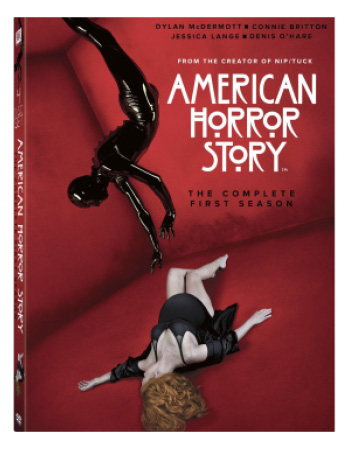
DEMO A–M

In this special anniversary issue, you’ll revisit former DEMO subjects, meet new ones and trace Columbia’s exciting last decade of history—all alphabetically, of course. Check out the first half of the alphabet here, then click over to the second half to read even more about Columbia’s eclectic, exciting alumni.
A
Anniversary

Writer and comedian Lena Waithe (BA ’06) grinning in the wake of her big break. Dino Stamatopoulos (’87) reigning over his LA animation studio. A comic-book Chicago drawn by Art Baltazar (BA ’92). A handful of rubber chickens. Over the years, DEMO covers have highlighted the enviable and eclectic accomplishments of Columbia College Chicago and its alumni. Today, we’re celebrating all things DEMO with our 10-year anniversary issue.
In DEMO’s first issue in 2005, inaugural editor Ann Wiens explained the magazine’s offbeat name: “It’s shorthand for demonstration (a showcase) and democratic (for the benefit of the people at large). It comes from the Greek demos, ‘of the people.’ And yes, it’s also short for demolition (tearing down the obsolete to make room for the new).” Through the last decade, we’ve stayed true to this promise, remaining a publication for, by and about Columbia’s best and brightest—featuring more than 2,000 alumni artists, activists and entrepreneurs through spotlights, portfolios, class notes and more.
We have a fresh A-to-Z format for the special occasion. In the following pages, you’ll revisit former DEMO subjects, meet new ones and trace Columbia’s exciting last decade of history—all alphabetically, of course.
In DEMO 8, we looked at plans to build the innovative Media Production Center, the first newly constructed building in the college’s history; now, we look at how, five years later, the facility helps transform the way that students learn filmmaking. In DEMO 13, we covered the fascinating life story of Olympic gold medalist Adolph Kiefer (BA ’40); here, we catch up with the legendary swimmer, now 97. We revisit old subjects like animal rights activist Jenny Brown (BA ’94) and book artist Brian Dettmer (BA ’97), and discover new ones like multimedia artist Sam Kirk (BA ’05) and photographer Misty Keasler (BA ’01).
As we celebrate the past and future of Columbia’s vibrant community, we also want to pause and recognize the present— which means we’re also celebrating you! Thank you for reading, sharing, sending class notes and contributing to a decade (wow!) of this magazine. We couldn’t do it without you.
B
Business & Entrepreneurship
Who says art and business don’t mix? These Columbia alumni have made their mark on the business side of Chicago’s music scene.
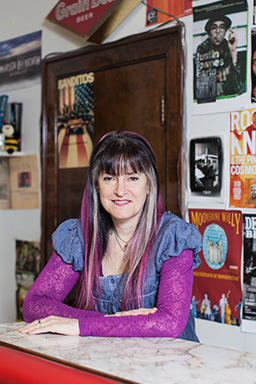
Nan Warshaw (MA ’93)
Co-owner, Bloodshot Records
Bloodshot Records, focusing on music with old-school grit, has been a Chicago staple for more than 20 years. If it’s got the Bloodshot stamp, you know it’s gonna be good. (Check out DEMO 22 for a feature on Warshaw.)
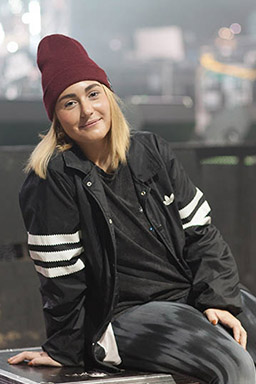
Tara Huelsebusch (BA ’15)
Marketing Director, Silver Wrapper
Promotion and production company Silver Wrapper brings artists to Chicago for concerts and produces local festivals like Taste of Randolph and the eclectic North Coast Music Festival.
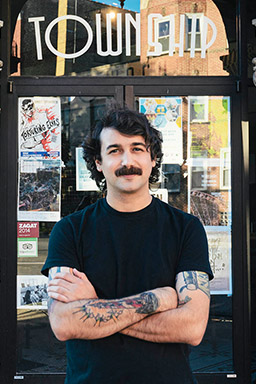
Aaron Sweat (BA ’13)
Talent Buyer, House Call Entertainment
House Call Entertainment books artists for beloved local venues Township and The Abbey, as well as Elston Avenue Sausage & Music Fest and Remix Chicago.
C
Cinematography
Some of Hollywood’s top cinematographers graduated from Columbia College Chicago. Can you match these five renowned directors of photography with their big-name projects? (If you need a cheat sheet, we covered these impressive moviemakers in DEMO 19.)

Mauro Fiore (BA ’87)
Janusz Kaminski (BA ’87)
Jeffrey Jur (BA ’77)
Michael Goi (BA ’80)
Declan Quinn (BA ’79)
KEY: 1. Mauro Fiore (BA ’87), D. Avatar; 2. Janusz Kaminski (BA ’87), E. Saving Private Ryan; 3. Jeffrey Jur (BA ’77), B. Dexter ; 4. Michael Goi (BA ’80), C. American Horror Story; 5. Declan Quinn (BA ’79), A. Leaving Las Vegas
C
Class Notes

C
Comedy
Columbia College Chicago’s new Comedy Writing and Performance degree— an expansion of the Comedy Studies semester at Second City covered in DEMO 10—aims to churn out comedians who can not only perform, but also write, produce and direct material. The unique degree is, without a doubt, a game-changer—but even before it was introduced in 2013, Columbia was producing influential comedic talent.

AIDY BRYANT (BA ’09)
You know her, you love her: Lil’ Baby Aidy, one of Saturday Night Live’s breakout cast members since 2012 (see DEMO 20 for Bryant’s first-person account of landing on the show). In addition to writing and performing in the classic sketch comedy show, she’s made recent guest appearances on Girls and Broad City.

ABBEY LONDER (BA ’08)
“The one thing I love about comedy, and the reason why it’s been so addictive, is because of these amazing people you meet.” —Abbey Londer (BA ’08)
Since 2012, Abbey Londer has singlehandedly produced Riot LA, the city’s hottest comedy festival, where comics both world- famous and unknown congregate in a weekend-long “comedy crawl.” Says stand- up comic Kyle Kinane (BA ’02), “It’s one of those festivals [where] you look at your set time and you’re pissed because there are three other shows you want to see at the same time you’re gonna go on.”
In addition to showcasing some of the country’s best comedy, Londer strives to give the festival a sense of community.
“The one thing I love about comedy, and the reason why it’s been so addictive, is because of these amazing people you meet,” she says. By keeping the festival walkable (and turning one of the parking lots into an adult playground with food trucks, photo booths and arcade games), she’s made Riot LA into a sort of block party where everyone, from comedy’s biggest names to its biggest fans, can celebrate the city’s immeasurable talent.

JEREMY BEILER (BA ’04)
Working closely with Aidy Bryant, Jeremy Beiler wrote for the 40th season of SNL, as well as the quirky mock-game show Bunk and the second season of Inside Amy Schumer. (From the latter, you may remember his Aaron Sorkin parody, “The Foodroom,” or his appearance as a stylist on the tongue-in-cheek “Say Fine to the Shirt.”) He also plays newscaster Jason Copeland on The Onion News Network.
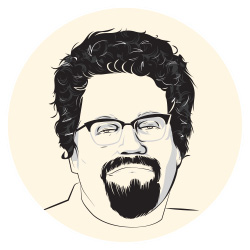
BRIAN POSEN (BA ’90)
If it’s in Chicago, and if it’s comedy, Brian Posen probably has his hands in it. He’s the artistic director of Stage 773, a performer with the Cupid Players, and the founder and organizer of the Chicago Sketch Comedy Festival (the largest festival of its kind in the nation, even though it’s held in the middle of the Chicago winter). He also heads the Second City training program and has taught improv at his alma mater, Columbia College Chicago, for more than 20 years.
Most people would be exhausted simply reading that list of accomplishments, let alone living it, but Posen is brimming with infectious energy that’s inspired generations of students. (Abbey Londer says her time volunteering at Sketchfest “definitely” influenced the feel of Riot LA.) To Posen, it’s only natural.
“I was so moved by these teachers that have helped me so much. I’m just stupid loyal and stupid sappy and stupid sentimental about that shit,” he says. “What is my role [in Chicago comedy]? Giving back. Creating opportunities for others like others have created opportunities for me.”


ALEX HANPETER (BA ’12) & JUDE TEDMORI (BA ’13)
After cutting their teeth in Chicago’s sketch scene, Alex Hanpeter and Jude Tedmori moved to LA in June to explore the wider world of comedy. Their now-defunct sketch group, Two Bunnies Eating Flowers (formed with Kyle Reinhard, who’s staying in Chicago), focused on experimental, off-the-wall material that won the hearts of comedy veterans like Brian Posen and Second City’s Director of Comedy Studies Anne Libera. Though Two Bunnies is no more, Tedmori and Hanpeter plan to continue working together and branch out beyond live performance.

KYLE KINANE (BA ’02)
Kyle Kinane, profiled in DEMO 19, is a cult hero of standup comedy, known for his ability to turn the most inane moments (like checking the Red Lobster Cheddar Bay Biscuits Facebook page) into ponderous, hilarious stories. When he’s not touring or working on his next comedy album (his third, I Liked His Old Stuff Better, was released in early 2015 to rave reviews), he makes appearances on Workaholics, Bob’s Burgers, and the star-studded, R-rated animated movie Hell & Back.

LENA WAITHE (BA ’06)
Lena Waithe has kept busy since producing the award-winning 2014 satirical film Dear White People. She is co-starring in Aziz Ansari’s Netflix comedy, Master of None; working with influential casting director Allison Jones; developing her TV script Twenties (highlighted in DEMO 20); and shooting a pilot she wrote for Showtime with executive producer Common (’96).
Waithe is quietly enthusiastic about the turns her career has taken. “I’ve been on set as a writer, I’ve been on set as a producer and I’ve been on set as an actor,” she says. “To be able to experience that in those three different ways is an education that you can’t pay for.”


KEVIN GERRITY (’11) & ZACH BARTZ (BA ’13)
Zach Bartz and Kevin Gerrity are the creative force behind The Shithole, a free Chicago comedy show where nothing, not even the location, is predictable. Seeking a refuge from the insincerity and pressure of the comedy industry, the duo created a space where original work can find its place in an ultra-supportive atmosphere.
The Shithole has grown exponentially while always staying true to its experimental roots. At any given performance, you might see a woman smearing barbecue sauce all over her body, a love song sung to a Michelle Obama calendar or King Kong performing ballet—and, of course, Bartz, Gerrity and musical director Dan Wilcop (’10) performing improv as Gnar Gnar Shredtown.
The Shithole roves around the city, taking place in backyards, garages, attics and even, occasionally, actual stages. If you want to find it, you’ll have to follow their motto and “Message for Details.” —Hannah Lorenz (’16)
D
Dettmer, Brian

The New Family Game Book, 2013, Hardcover, book, acrylic varnish, 8 1/2 x 7 1/4 x 1 3/4″
Since appearing in the pages of DEMO 15, multimedia artist Brian Dettmer (BA ’97) moved his studio from Atlanta to Brooklyn, staged a 10-year retrospective of his work at an Italian gallery and continued carving the intricate book sculptures that made his name in the art world.
Dettmer’s painstaking process involves varnishing books and then excavating them layer by layer with tweezers and X-Acto knives. Projects can take anywhere from a handful of days to a span of months.
Dettmer doesn’t memorize books before working with them, which makes his process an act of discovery every time. “There’s a high level of chance because I don’t know what’s coming on the next page,” he says. “It’s really a collaboration between me and the book.”
“We’re at this point in history where we need to question how things will work, and what is in danger of being lost by this transition.”
Sometimes people ask how Dettmer continues to find inspiration after more than a decade of book work. He’s not sweating it. “I think that with books, the context and potential is sort of endless,” he says. “It’s probably the most relevant material to think about, professionally and physically, at this point in history.”
With the rise of the Internet making old-school reference books obsolete, Dettmer uses recycled encyclopedias and dictionaries to consider the evolution of information. “We’re at this point in history where we need to question how things will work, and what is in danger of being lost by this transition,” he says.
E
Entrepreneur
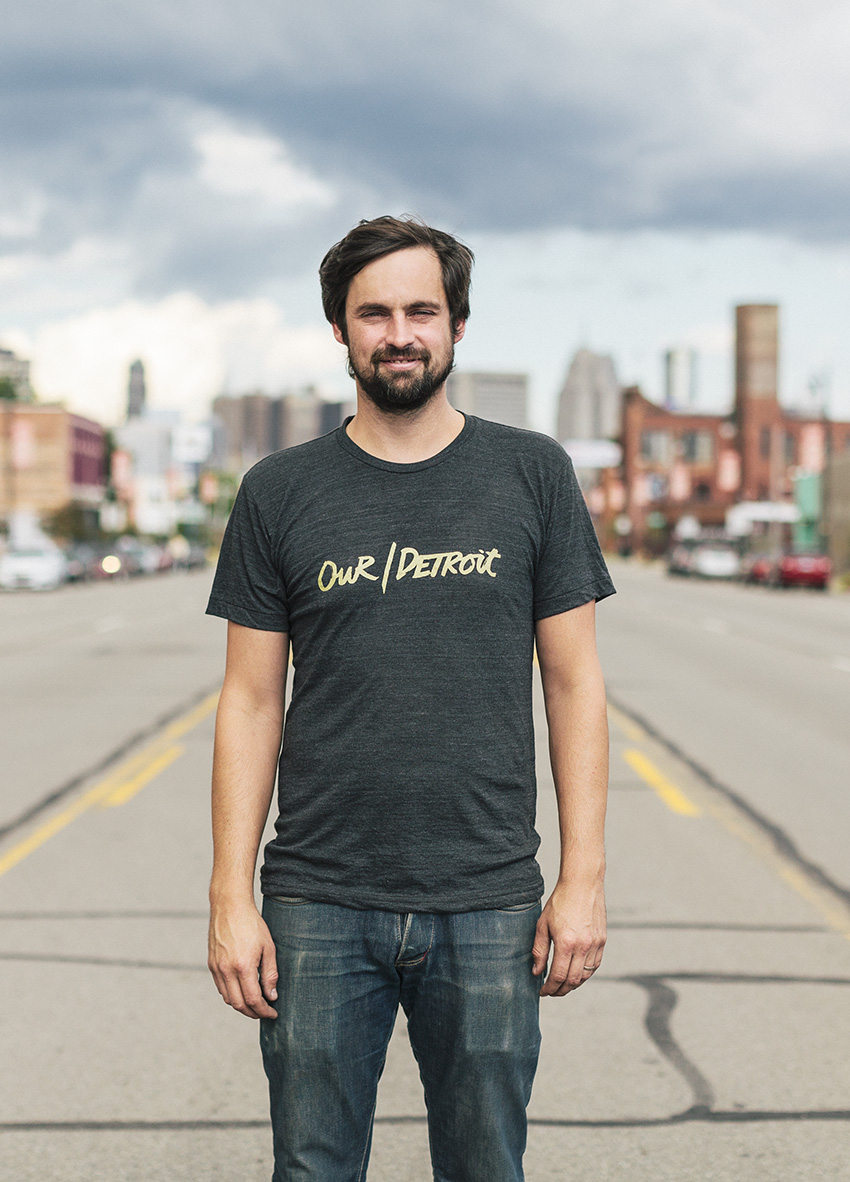
Detroit is in the midst of a massive revival, and Phillip Cooley (BA ’00) isn’t afraid to get his hands dirty. See how this entrepreneur continues to bring new life to his hometown.
It might have been enough for aspiring filmmaker and international runway model Phillip Cooley (BA ’00) to return home to Detroit and set up shop within the family’s development business. Instead, he opened a restaurant in one of the bleakest parts of the Motor City and committed himself to its revitalization effort.
“… a salon and bicycle shop opened up, and a furniture store is opening as well. That’s just on our block, and we’re starting to see that same growth all over Detroit.”
Since being featured in DEMO 18 just two years ago, Cooley has expanded his non- profit efforts while still finding the time to get married in 2015. He’s been much lauded for feeding the profits of Slows Bar BQ back into his local nonprofit Ponyride, which gives entrepreneurs and budding artists a lift through inexpensive rental space in a rehabbed building. A pied piper who’s coaxed fellow successful millennials to donate their time and services, Cooley could well be the face of an urban return.
Turning a Nonprofit
Ponyride has exploded since its inception in 2011. Two years ago, the building had a dozen residents; now it has 100-percent occupancy, helping give rise to ventures ranging from carpentry and concrete services, to clothing stores, to dance and recording studios. Nearly 200 more hopeful tenants sit on a waiting list.
While benefitting from the success of Slows Bar BQ, Ponyride still lost about $50,000 a year in its first three years of existence. “We think we’re going to be pretty close to breaking even this year,” says Cooley.
Aside from cheap rental space, Ponyride now helps with business development for its tenants. “We have an advisory board of professionals that includes lawyers, marketers, accountants and more that meet with the businesses,” Cooley says.
Corktown Revival
Opening a restaurant on a block surrounded by 10 abandoned buildings was a gamble, but it paid off for both Cooley and Corktown, the historic Irish neighborhood Slows inhabits. In August, Slows celebrated its 10-year anniversary by opening a second restaurant in Grand Rapids, Michigan. Cooley also opened another restaurant, Gold Cash Gold, on the same block in December 2014.
Cooley believes a youthful movement can help restore Detroit to its former cultural significance. “We now have multiple restaurants opening up every month in the neighborhood,” he says. “There’s also the retail component: a salon and bicycle shop opened up, and a furniture store is opening as well. That’s just on our block, and we’re starting to see that same growth all over Detroit.” —William Meiners (MFA ’96)
See the businesses Phillip Cooley has brought to a revitalized Detroit.
PONYRIDE
1401 Vermont St., Detroit
This large warehouse serves as ultra-cheap rental space for budding businesses. Ponyride also offers assistance with business development.
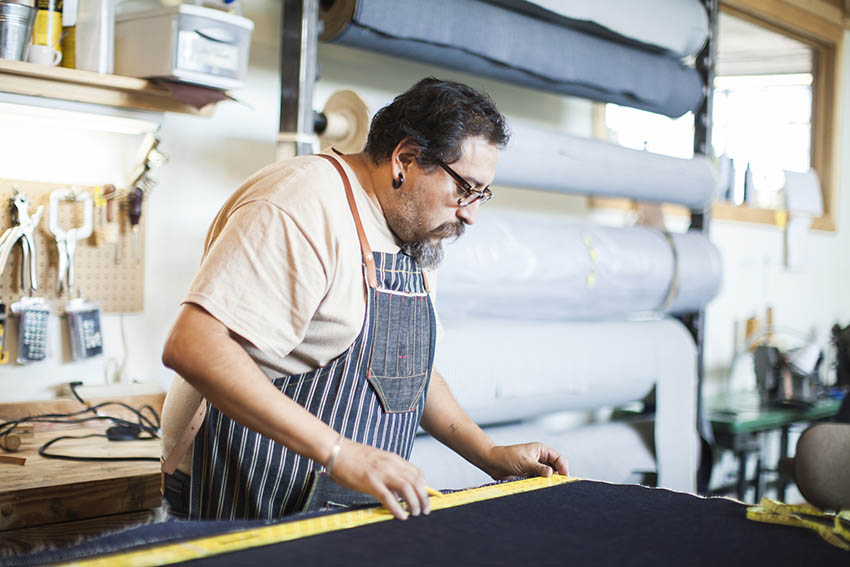
Detroit Denim Co. is dedicated to creating long-lasting, quality jeans through traditional craftsmanship.
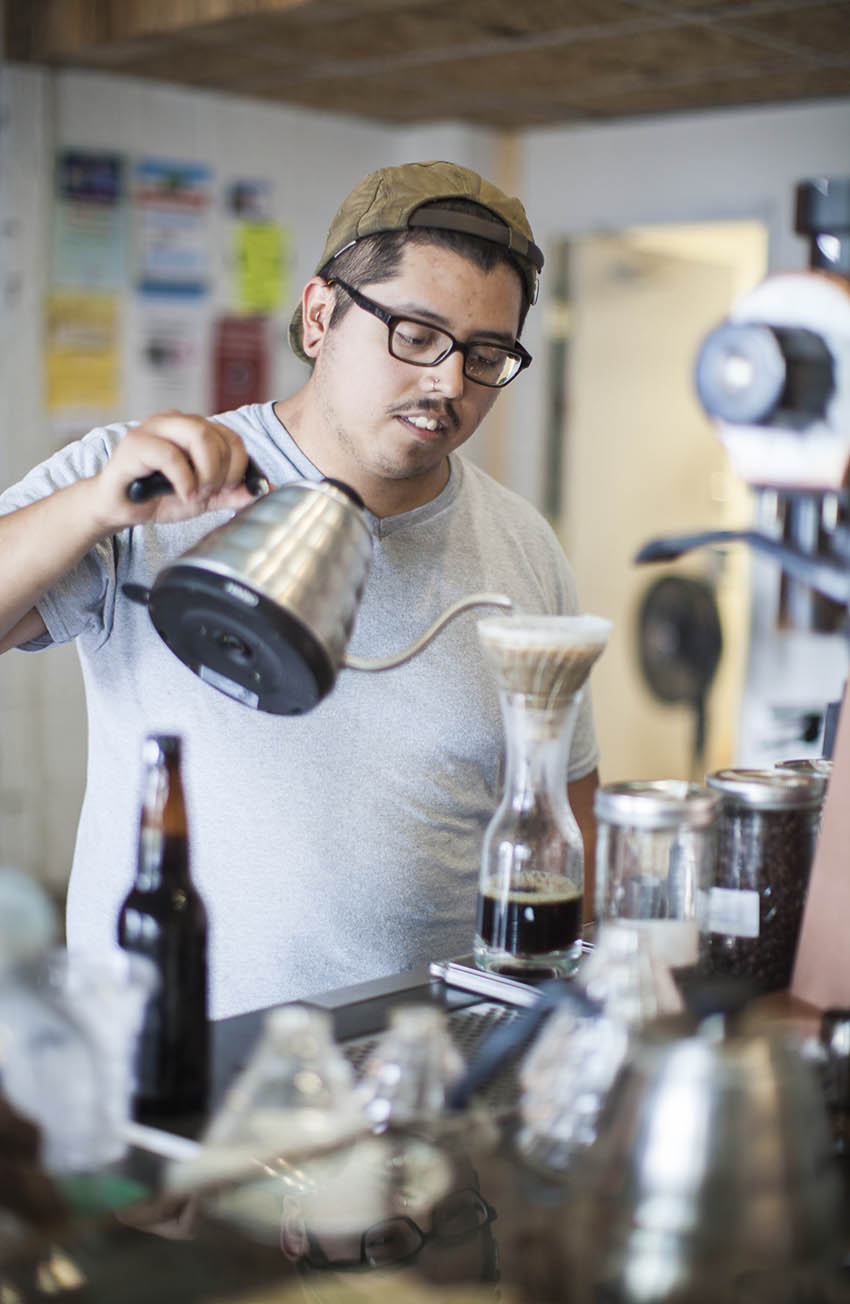
Serious coffee lovers go to Anthology Coffee to get the best brews in town.

The modern metalworkers at Smith Shop create handcrafted metal products of all kinds and offer classes and workshops.

Furniture company Floyd designs versatile furniture intended for city living. Their signature Floyd Leg lets you turn nearly any flat surface into a table.
GOLD CASH GOLD
2100 Michigan Ave., Detroit
Gold Cash Gold serves down-home cuisine in a retired pawnshop. (The name comes from the text emblazoned on the shop’s exterior.) The restaurant sits down the street from Slows Bar BQ, which was surrounded by abandoned buildings when it opened. Gold Cash Gold fills the space of the last empty building on the block.
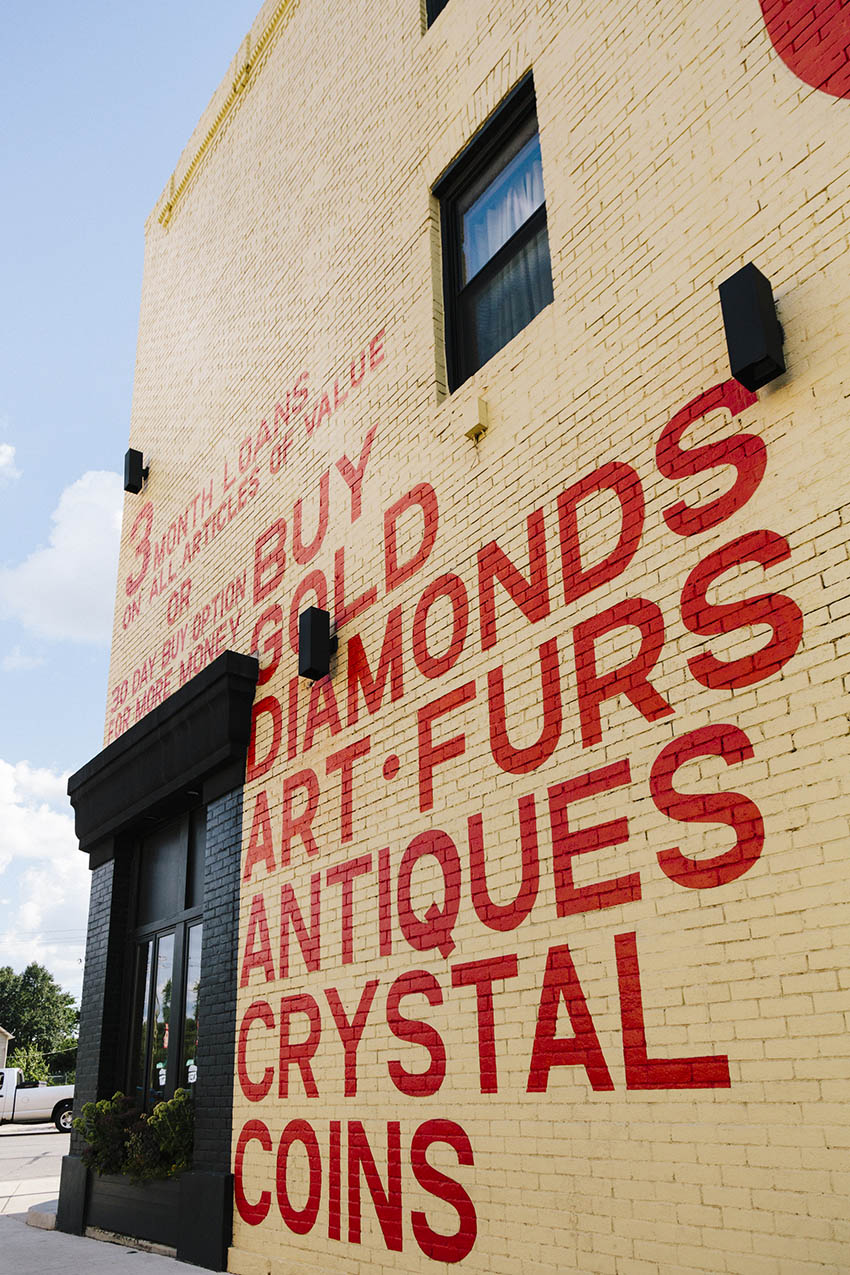

SLOWS BAR BQ
2138 Michigan Ave., Detroit
Cooley’s first restaurant celebrated its 10-year anniversary in August. It now has locations in Detroit and Grand Rapids, Michigan.

F
Flosstradamus

Originally a side project between Curt “Autobot” Cameruci (BA ’05) and Josh “J2K” Young (’03) in the height of the Myspace days, Flosstradamus is becoming one of the biggest names in the EDM (electronic dance music) scene. The duo, featured in DEMO 10, offers a mix of edgy electronic beats and the intensity of today’s hip-hop scene; every track is exciting enough for the club or a major music festival. Flosstradamus will kick off 2016 in the Bahamas performing on the Holy Ship! cruise.
In nine years, the duo has:
• Played 28 festivals including Coachella, Spring Awakening Music Festival and Lollapalooza
• Performed in 12 countries
• Collaborated with Lil’ Jon, Iggy Azalea and Run The Jewels
• Reached 5.8 million followers on SoundCloud
• Been featured in Spin, Paper, Billboard and Rolling Stone
F
Food
Columbia doesn’t offer a culinary arts degree—but that didn’t stop these four alumni-turned-restaurateurs. From cupcakes to BBQ to some serious grilled cheese sandwiches, these entrepreneurs serve up a smorgasbord of innovative and quirky dishes across the country. DEMO asked four restaurant owners to recommend their favorite bites. Go ahead, have a taste.

DON HEIN (’96)
LITTLE CAKES
Where: Little Cakes, a San Diego-based cupcake shop made famous by Hein’s multiple wins on Food Network’s Cupcake Wars.
What: The Norman, a chocolate-coconut cupcake with caramel buttercream and toasted coconut.
Why: Hein thinks Little Cakes’ success lies in his Italian buttercream, an understated frosting that unites flavors instead of overpowering them. “The combination of everything together is what really makes it,” says Hein. “You have a sum of all the parts.” The Norman is named in honor of his brindle-colored rescue dog (whose coat matches the cake’s marbled interior).

MATT BRESLOW (BA ’04)
GRILLED CHEESE GRILL
Where: Grilled Cheese Grill, which started as a Portland-based food cart and grew to include two reclaimed vehicles-turned-restaurants: a double decker bus and a school bus.
What: The Cheesus, a burger stuffed between two grilled cheese sandwiches. The top sandwich: pickles and American cheese. The bottom: grilled onions and Colby Jack. The middle: a one-third pound burger with all the fixings.
Why: As a film student, Breslow wanted to create comfort films you could turn on while folding laundry (and quote every line). That feel-good nostalgic philosophy expands to grilled cheese. “You come for half an hour, it puts a smile on your face and you leave happy,” he says.

BARRY SORKIN (BA ’96)
SMOQUE BBQ
Where: Smoque BBQ , regarded by many to be Chicago’s best BBQ spot.
What: Ribs—both the classic baby back ribs and the meatier, smokier St. Louis spare ribs.
Why: After a heavy coating of spice rub, the ribs are smoked over apple and oak wood for three to four hours. Then they’re brushed with a very thin layer of BBQ sauce right before being served, which turns into a caramelized crust without overpowering the meat. “We believe that BBQ sauce should be a complement, not the main event,” says Sorkin.

PHIL GHANTOUS (BA ’00)
CAFECITO
Where: Cafecito, a pair of Cuban restaurants specializing in coffee and pressed sandwiches located in the Chicago Loop (covered in DEMO 9).
What: The Cubano, a sandwich featuring pork, ham, Swiss cheese, pickles and mustard, all grilled to perfection. Plus, Cafecito marinates all meats in its homemade mojo sauce.
Why: Ghantous found inspiration in Miami’s Cuban sandwich shops and perfected his Cubano at home, working to find the perfect ratio of ingredients. “A balance of the flavors from the pork, the ham, the mojo that’s used in the marinade,” he says. “Something as simple as pickle and mustard. Everything is a contributing factor.”
G
Games
The booming game design industry, worth more than $20 billion in the U.S., is rapidly evolving. And it looks completely different from when Columbia College Chicago introduced majors in game design/development in 2007 (covered in DEMO 11). But Columbia grads are prepared to weather the fluctuations.
“We are constantly thinking about our objectives—about what kind of game developer walks out of our program and what kind of industry they’re going to be walking into,” says Tom Dowd, associate chair of the Interactive Arts & Media Department. “We create very broadly skilled students. They have the technical and creative flexibility to slide themselves in a number of directions depending on what opportunities arise.”
Here, four of Columbia’s first-generation game alumni sound off on their careers.
![]() NOAH JOHNSON (BA ’11)
NOAH JOHNSON (BA ’11)
INCONTEXT SOLUTIONS
Johnson, one of the very first Game Design grads (who now teaches in the college’s Interactive Arts & Media Department), leads a collaborative technical art team at InContext, a Chicago-based 3D simulation/visualization company. There, he creates digital simulations of real retail environments, which are then used for market research. “It’s what we call ‘serious games,’” he says. “For Kraft, we might be building a shelf full of Kraft macaroni and cheese along with products from their competitors. We have [consumers] move through [the space], and we gather data the whole time. It’s more interactive than giving people static surveys.”
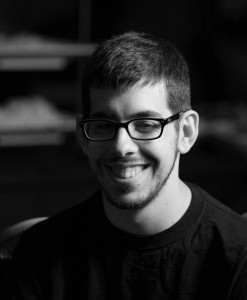 JOHN FAVARO (BA ’11)
JOHN FAVARO (BA ’11)
BUNGIE
Favaro is an investment systems designer at the major game studio Bungie (creator of Halo), developing the awards and achievements that keep people playing. “I spend eight hours a day making games, and then I come home and I play games for fun,” he says. “Even a game you don’t like can teach you something. You won’t always be able to make the game you want to make. You may wind up getting a job making Barbie’s Horse Adventures when you really want to make an action [role-playing game], but you have to love your job to eventually succeed in it.”
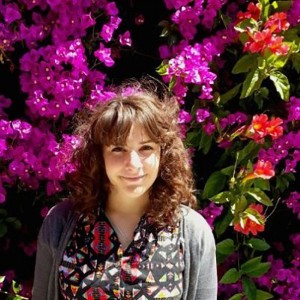 EMILY SALIBA (BS ’15)
EMILY SALIBA (BS ’15)
GIRLS WHO CODE
Recent graduate Saliba is a teacher for New York-based nonprofit Girls Who Code, an organization that teaches computer science skills to high school girls. “I thought I was getting a pretty good education, but then as soon as I left [school], I was like, ‘Okay—it was really good,’” says Saliba. “I was at my job training with tons of other women (and a couple of men) who were going to be teachers for the summer with me. I was really intimidated because some of them were in grad school or had PhDs.” But as they began to work together, she realized she was keeping up with them.
Even though her newly minted degree was in “hard” science, Saliba describes the “soft” skills, such as emotional intelligence and team dynamics, she learned at Columbia as invaluable. “That’s something you can’t get out of a textbook or by learning online yourself.”
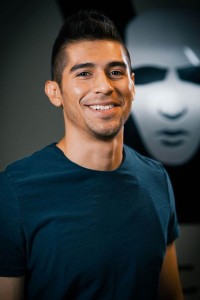 ROEL SANCHEZ (BA ’12)
ROEL SANCHEZ (BA ’12)
BIOWARE
Austin, Texas-based Sanchez, who concentrated in Game Sound Design, is now a senior audio artist for BioWare, a division of leading game company Electronic Arts. BioWare’s titles include the hugely popular and critically acclaimed Mass Effect series, as well as Star Wars: Knights of the Old Republic and Dragon Age. He says Columbia was the ideal training ground for his work, which depends heavily on collaboration with others. “The progression of the courses and especially the large team project really prepare you for the environment and the scenarios you’re going to encounter in game production,” he says. “It’s chaos, but it really gets you in the right mindset. I’m still applying the same things I learned there every day at my job.”
—Audrey Michelle Mast (BA ’00)
H
Agnes Hamerlik
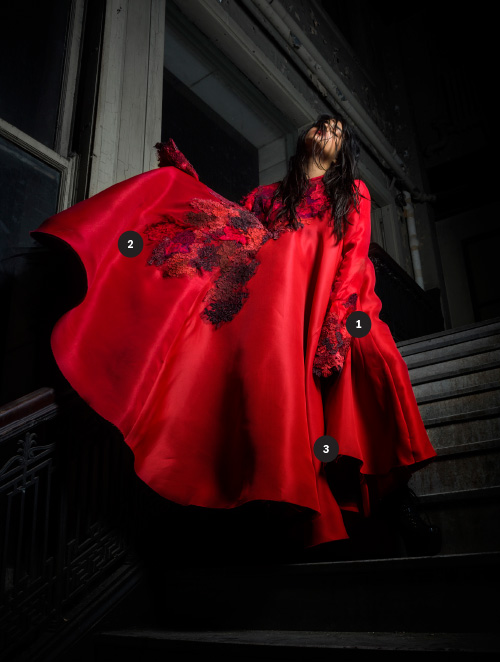
The aesthetic of fashion designer Agnes Hamerlik (BFA ’12) follows the Japanese concept of wabisabi: finding beauty in things that are imperfect or incomplete. Since appearing on DEMO 18’s cover, she’s showcased collections at Chicago and New York Fashion Weeks. Here, she walks us through her design for The Red Dress, the opening piece in her mini semi-couture collection Botanical Fragmentation.
1. Bursts of hand-manipulated French lace and intricate embroidery flow down the dress and embellish the sleeves.
2. Pure silk gazar is interfaced with silk organza to add rigidity to the fabric.
3. Dramatic draping makes The Red Dress a showstopper.
I
Illustrated Press
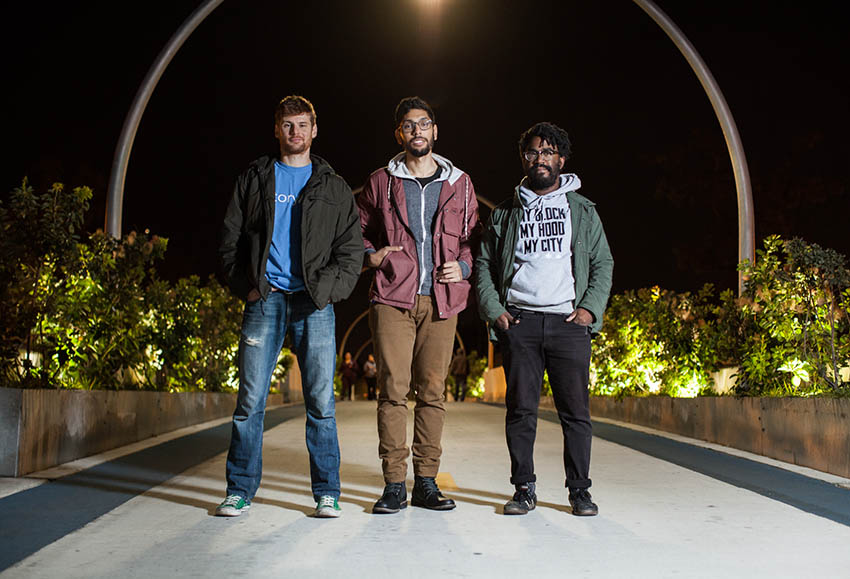
Jamie Hibdon, Erik Rodriguez and Darryl Holliday
How do you define a city like Chicago? For Darryl Holliday (BA ’12) and Erik Rodriguez (’11), the answer lies in the stories of people you pass every day, from the surprising to the mundane.
The duo behind Illustrated Press, which presents journalistic reporting in an innovative comic book format, is compiling some of those stories in the upcoming book Kedzie Avenue, a follow-up to 2012’s The Illustrated Press: Chicago. (Since being featured in DEMO 18, they’ve also added a third member, illustrator Jamie Hibdon, and have produced nonfiction comics for local news outlets, including The Chicago Reader and WBEZ.)
Kedzie Avenue examines its namesake street from top to bottom, exploring histories, characters and communities that Holliday calls “microcosms of the city itself.”
“[There’s] such a diverse range of people and places and stories on that route,” he says. “It’s been a really interesting adventure, learning about the city through tracking down this one street.”
J
Rashid Johnson

Rashid Johnson (BA ’00) is an internationally acclaimed fine artist focusing on black identity through a wide variety of media and unexpected materials.
His exhibit Anxious Men opened Oct. 2 at The Drawing Center in New York City to critical acclaim. The highlight of the exhibit is a series of abstract portraits drawn in black soap and wax on white tile. Their agitated faces are violently scribbled into the materials, emphasizing the fear that comes with being a black man in America today.
Said Johnson in DEMO 8: “There’s a generation of black artists before me who made work specifically about the black experience. But I think for my generation … there’s less of a need to define the black experience so aggressively to a white audience. I think it gives us a different type of opportunity to have a more complex conversation around race and identity.”
K
Sam Kirk
![“Hoping & Praying You See Me” calls attention to homeless LGBT youth who are, for all intents and purposes, invisible as they walk the streets. Says Kirk of the boy in the image, “He must create his own path and [have] faith that life will work itself out.”](https://blogs.colum.edu/demomagazine/files/2015/12/hoping-and-praying_sam-kirk-239x300.jpg)
“Hoping & Praying You See Me” calls attention to homeless LGBT youth who are, for all intents and purposes, invisible as they walk the streets. Says Kirk of the boy in the image, “He must create his own path and [have] faith that life will work itself out.”
The work of Sam Kirk (BA ’05) ranges from fine art to interior design to custom installations, but it’s also multifaceted in the way it explores intersections between race, sexual identity and social justice.
The artist’s series of illustrations about sex trafficking, drawn on actual trafficking tickets, was inspired by exploring what happens to LGBT youth from traditional or conservative cultures. “A lot of times, there is unacceptance, and it leads to rejection, which leads to homelessness, which often leads to sex trafficking,” Kirk says.
She also connects with commercial clients to design restaurants or events. Since 2013, she’s art directed the Guinness Live It Up cultural celebration in Brooklyn, where she creates the visual elements of the fest, from speaker walls to modern versions of West Indian masks.
Through her organization Provoke Culture, Kirk collaborates with nonprofits like Project Fierce and the Center on Halsted to raise money through the sale of custom-made, socially conscious art. See more of her work at iamsamkirk.com.
L
Los Angeles
After graduation, many Columbia alumni flock to Los Angeles; it has the second-highest alumni population in America, behind Chicago itself. We asked LA residents Alexz Renteria (BA ’15), Heather Mahoney (BA ’05) and Hunter James Cox (BA ’14) to share their favorite places to …

. . . Have a cheap date.
VASQUEZ ROCKS
(AGUA DULCE, NORTH OF THE CITY)
A mountainous park that doubles as a popular film and TV shooting location
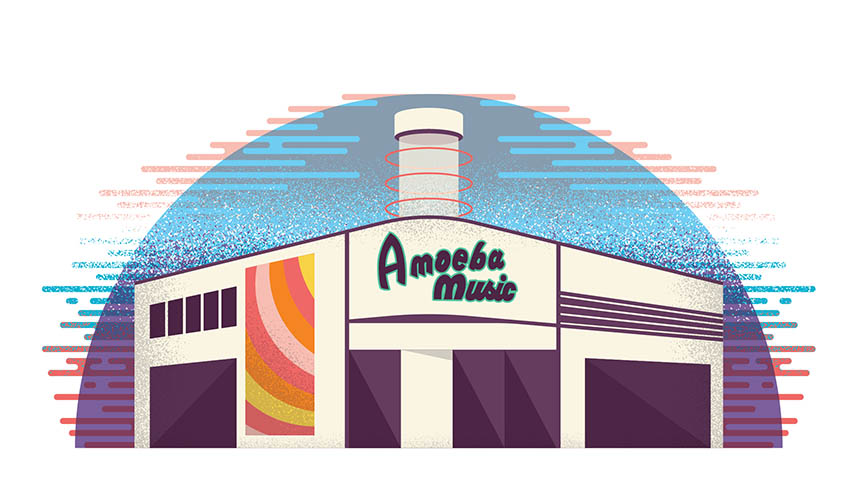
. . . Find hidden gems.
AMOEBA MUSIC
(6400 SUNSET BLVD.)
A behemoth independent record store with CDs, DVDs, vinyl and posters
. . . Get wild and crazy.
GOOD TIMES AT DAVEY WAYNE’S
(1611 N. EL CENTRO AVE.)
A ’70s-inspired club with a thrift store/vintage man cave motif

… Bring out-of-towners.
THE HOLLYWOOD SIGN
(BEST VIEWED FROM GRIFFITH PARK OBSERVATORY, 2800 E. OBSERVATORY ROAD)
A Los Angeles staple
SANTA MONICA PIER
(SANTA MONICA, WEST OF THE CITY)
A popular oceanside attraction with rides, games and a Ferris wheel
… See a movie.
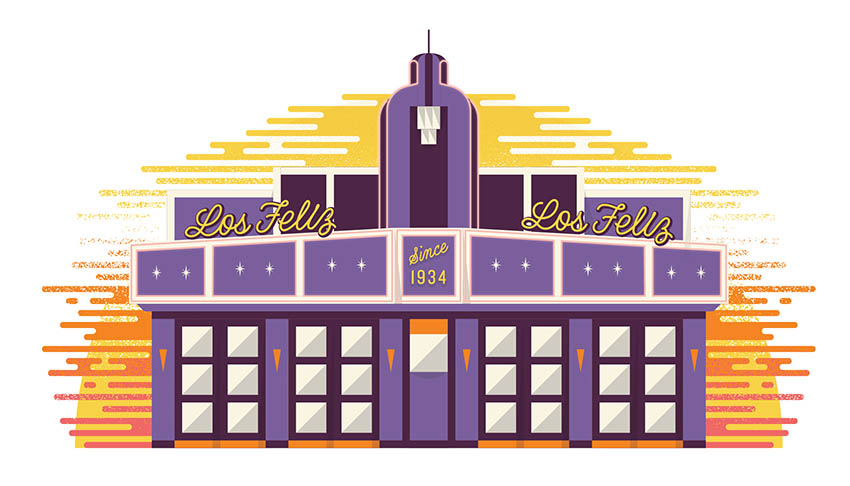 TCL CHINESE THEATRE
TCL CHINESE THEATRE
(6925 HOLLYWOOD BLVD.)
An iconic cinema palace with striking architecture
VISTA THEATRE
(4473 SUNSET DR.)
An opulent, single-screen theater with cheap tickets
THE LOS FELIZ 3
(1822 N VERMONT AVE.)
A small neighborhood theater with old-school charm
… Hear live music.
THE ROXY
(9009 SUNSET BLVD.)
A historic nightclub owned by Rock and Roll Hall of Famer Lou Adler
WHISKY A GO GO
(8901 SUNSET BLVD.)
An iconic venue with a divey vibe
M
Media Production Center
The first newly constructed building in the college’s history, opened in 2010, has transformed the way students learn filmmaking.

In 2009, Columbia College Chicago broke ground on the Media Production Center (MPC), the first newly constructed building in the college’s history (covered in DEMO 8). A year later, the MPC opened, offering two film production sound stages, a motion-capture studio, digital labs, animating suites, a fabrication shop and state-of- the-art classrooms that give students real movie production experience. Five years after the MPC’s opening, we examine how it is changing the way filmmaking is taught at Columbia.
THE BIRTH OF A PRACTICUM
An industrious hum fills the airy, modern-industrial halls of the MPC, at the corner of 16th and State streets. Hammers clatter in the workshop, furniture is shuffled into set dressing rooms, and students in the prop closet debate the artistic merits of a particular office chair. Outside the sound stages, you can sometimes find a bubble of quiet: When the red light is on, filming is in progress, and students know to tread lightly.
“It’s an environment where you can take risks, experiment and play with things,” says Cinema Art + Science Chair Bruce Sheridan, who was integral to the MPC’s development. The 35,500-square-foot-space is, in many ways, a physical manifestation of Columbia’s cross-disciplinary, hands-on spirit.
When Sheridan came to the department in 2001 (with 20 years of experience as a director, producer and educator), he focused on how to take the college’s thriving film program to the next level. “How do we create the future without cutting away this incredibly successful past?” he asked.
The answer came in two phases: a new curriculum and a new building in which it could flourish. The linchpin of this new curriculum was adding advanced practicum courses that mirror the film industry. In a practicum, more than 200 students collaborate with faculty and staff to develop, produce and screen short, distribution-ready films within the semester.
“[Practicum] projects forced us to work within a budget and schedule, which is essential in this business,” says Chris Charles (BA ’07), a Chicago-based independent producer who founded two production companies with his former classmate John Bosher (BA ’06). “They also taught us to collaborate with others who were not necessarily our friends or people we would have recruited if given the choice. This was an important lesson, as every project I’ve ever worked on has required collaborating with new people.”
The practicum films function as specialized capstone experiences for upperclassmen. Crucially, they also offer internship-style opportunities to underclassmen, who can build their all-important networks from day one. While advanced students hone their highly specialized skills, freshmen and sophomores work as production assistants and get a taste of what they’d like to study further.
Leah Kilpatrick (BA ’09), now an actress and comedian in Los Angeles, assisted on a practicum project in her first year. “Coming from Minnesota, not knowing what it was really like on a film set, [I now know] that the practicum environment was mirroring what it would be like in Hollywood,” she says. “I was able to talk to all the departments and see what it was to be a part of this team.” A year later, she worked on another practicum as a line producer. That student experience has translated to real-world success: She’s since line produced several independent films, including 2014’s Free the Nipple.
THE WAY WE WERE
Prior to the MPC’s opening in January 2010, Columbia’s film equipment and supplies were housed in buildings all over the South Loop. As Bosher recalls, “You had to go to 1104 South Wabash to pick up camera gear, 72 East 11th to pick up lighting and grip equipment, and 1401 South Wabash for props/set dressing and stages.” (The college maintained a small soundstage at 14th Street, which was shared with the Theatre Department and was a fraction of the size of the MPC stage.) “It could be a real nightmare, especially if you didn’t have access to a truck or van,” he says.
Even everyday exercises could be a challenge. Says Bosher: “In directing classes, we would partition the [14th Street] stage in two with just a thin wall separating two crews. Just before one side would do a take, the assistant director would bang on the wall and shout, ‘We’re shooting!’ The other side would have to remain quiet until hearing ‘cut,’ at which point they’d scramble to get their next shot. It was quite chaotic, but we worked with what we had and figured out how to get it all done in time.”
The curriculum carried out in the MPC offers opportunities to foster creative collaboration—plus a way to iron out the complicated logistics of any film production. Independent producer Dimitri Moore (BA ’11) was a student both before and after the MPC opened, and was hired to coordinate the practicum film program after he graduated. His own practicum project was shot off campus. “We had to rent a stage space on Grand Avenue and build a pirate ship there. It was logistically difficult,” he says. “We made it work, but we didn’t have the freedom to really experiment, because the logistics always won out.” That all changed when the new building opened in 2010. “The MPC allowed us to make the location fit our idea,” says Moore. “[It] made a lot of things seem more possible.”
Tanya Savard (BA ’10), a unit production manager assistant on NBC’s Chicago P.D., agrees. “Having the opportunity to shoot part of my short film on the MPC stages was a great way to learn how to film the way real shows film. It gave us creative freedom to make the set we had always envisioned from scratch and be able to tell the story the way we wanted to tell it.”
THE GRADUATES
Before the curriculum revamp in the mid-2000s, film students worked independently or in small teams and—largely due to the nature of an ever-expanding urban campus—rarely interacted outside of their specialized concentrations. And even though most students graduate with a specific focus, like directing or cinematography, they must understand every cog in the machine. Working together on a practicum film allows students to see beyond their individual role, and the MPC easily facilitates those interdisciplinary interactions.
Students can now experiment with cameras and equipment, test various film stocks and lighting styles, and work in a variety of roles in a much more organic way. “It sticks best when the students feel that they can explore by themselves and then come back and ask questions or make their own decisions,” says Sheridan. “That’s what they’re able to do there that they couldn’t do in any other facilities beforehand.” It’s particularly helpful for freshmen to work in the same space as upperclassmen; they’re encouraged (and expected) to observe or assist the more advanced productions.
Thanks to professional-level experience in a collaborative environment, students actively demonstrate their abilities every day to their professors and peers—the people who might eventually hire them. Moore, who now helms his own San Francisco company, DWM Producing, says, “I could see a lot more in 10 minutes of watching [students] work at the MPC than I could in a week of them telling me [about their work]. And that’s very important for me as a producer—to see how they communicate together, how they work together.” Sheridan stresses that he wants the department to educate creative teams, not just creative individuals. With the enhanced curriculum, and the building created to house it, Columbia’s film students leave the college not just knowing how to operate a camera or create a budget, but how to build a filmmaking team. With that invaluable skill, they can begin influencing the film industry faster than ever before. —Audrey Michelle Mast (BA ’00)


